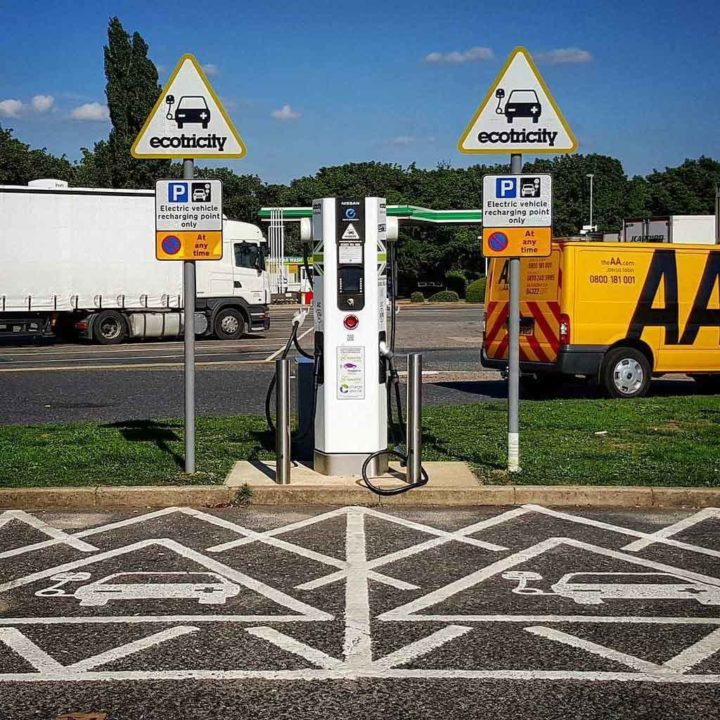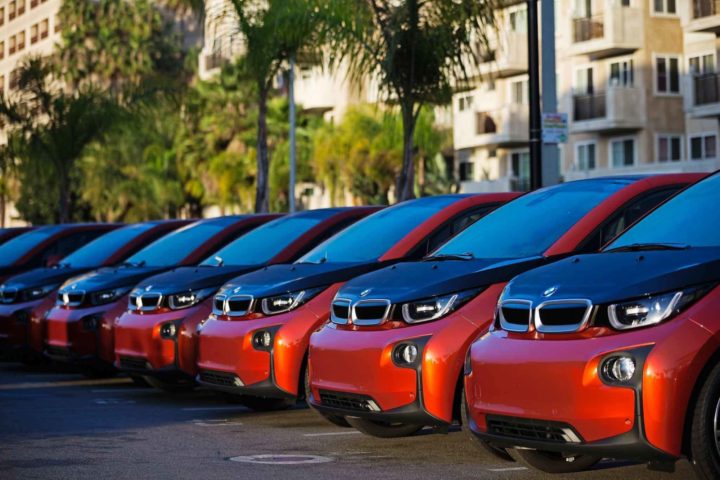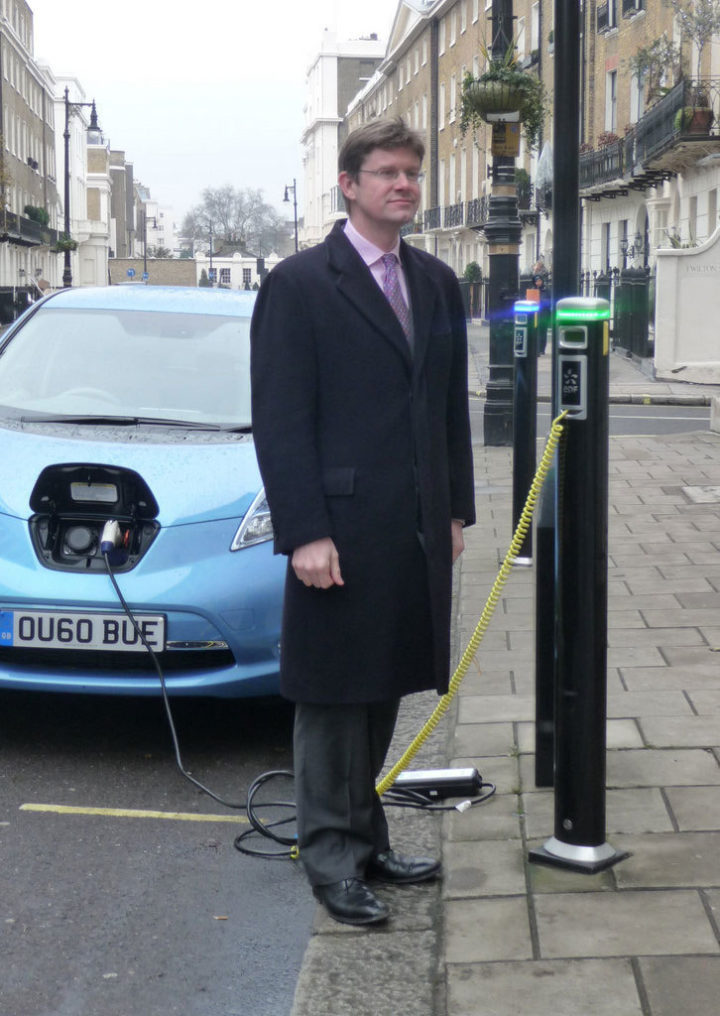Car Power!
Connecting electric vehicles to the power grid could unlock huge opportunities
By Matt Finch
Share
Last updated:
Let’s start with the good news. The electric vehicle (EV) debate has moved on. The old question - a variant of “Should the future of the passenger car industry be electric?’ - has been answered, and the answer is “Yes - and it will be”.

The bad news though is that we’ve moved onto the next round of questions, and there is one very legitimate question that needs answering: how will the grid cope with the spike in demand that could occur with all the extra electricity needed?
If we presume that all 30 million odd cars in the UK right now are replaced with electric vehicles, and IF nothing else changes then the extra teatime electricity demand would not only be higher than it currently is, but also higher than we could produce with our existing generators right now. This concern is so great that the BEIS select committee launched an inquiry last year into how EVs will affect the grid.
There is both a literal and figurative big ‘if’ in that sentence, though. The brutal truth is that the vast majority of chargepoints needed to charge 30 million cars haven’t been installed yet. The other truth is that almost all the chargepoints already installed are relatively ‘dumb’. They are not designed to pause charging, start charging at a certain time, or even provide electricity back to the grid.
Yes, provide electricity stored in the vehicle back to the grid. Since electric vehicles are essentially a large battery on wheels, and since those wheels are parked for 96% of an EV’s life, it makes sense that the battery is allowed to be used for other purposes. In practice, this could mean that upon getting home at night and plugging your car in, instead of drawing power straight away, the car battery would, say, power your TV for a bit.
This trick, known as V2G (vehicle to grid) has been in the pipeline for a while, but is still very much a fledgling technology. The government confirmed it wants it to fly, though, via last years’ Clean Growth Strategy. Via Innovate UK it has distributed some £30m to what are essentially 20 test projects. Should these projects prove that V2G is technically, culturally and economically feasible (and there is no reason why it should not be), then the question “can the grid handle it?” becomes completely redundant - the UK's fleet of EVs actually become part of the grid.
Power potential
And what a part of the grid it could be.

If the future fleet of vehicles still numbers around 30 million (as it roughly does today), and each vehicle has a 40 KWh battery size (ie the same as the latest Nissan Leaf, so very likely), then the UK’s car fleet has a potential cumulative battery capacity of 1,200,000,000 KWh, or 1.2 TWh (ie the cars could provide 1.2 TW for one hour).
This is massive - the maximum amount the UK demanded from the national grid in a single half hourly period last winter was 52,909 MW, or roughly only 5% of what the cars could provide - and this doesn’t take into account the fact that battery capacities will surely only keep on rising. There are obvious caveats to this. For instance, not all cars would be connected at any one point, the amount of power that could actually be drawn back at any one point would be limited by the charging infrastructure, etc. But a small percentage (let’s say 1%?) of a very large number (the above mentioned 1.2 TWh) is still a very large number (12,000 MWh. One MWh is enough electricity to run about 18,000 40 inch TVs for an hour).
In fact, it would be no exaggeration to say that the UK's cars would store so much energy that they could in principle power half of Europe. In short, in true Airbnb disruptive style, should V2G take off, the cars could become the single biggest (collective) power plant in the UK, despite not making any power themselves. (And actually that last sentence isn’t strictly true anymore - the latest version of the Toyota Prius comes with optional solar panels on the roof.) The daily peaks and troughs of the electricity demand profile would all but disappear.
Export opportunities
But whilst balancing the grid is massively important, there is another reason that V2G could be hugely important to post-Brexit Britain, and that’s cold, hard cash. V2G is a fledgling industry worldwide, so the UK really has a chance to become a world leader in this area.

However the UK is not alone in trying to win this crown. The Finnish energy industries have clubbed together to form Virta, which provides EV owners with chargepoints, and has just launched its first public V2G chargepoint. All their points are already ‘smart’. They can not only stop charging if needed, but can also go one step further and only charge when electricity prices are low. In neighbouring Denmark, the first commercial V2G station has already been opened in Copenhagen. A Danish utility company has 10 chargers, all able to provide back to the grid as and when. In California, BMW has just finished a pilot that proved their V2G technology can aid grid-balancing. And even oil-giant Shell is getting in on the EV smart charging act.
In short, there are small-scale / test sites everywhere, but the Innovate UK funding may well mean the UK has just - erm - charged into the lead. And that’s where the cold, hard cash could come from. Being a world leader in a technology / service usually means exporting that technology / service to other countries, and that means earning some much-wanted export earnings.
How much could be earned? Well, China is planning that all its future vehicle sales growth to 2025 comes exclusively from EVs. India has a very ambitious plan to convert and change all its vehicles to electric vehicles by 2030. BNEF (Bloomberg New Energy Finance) predicts that by 2040, 54% of new car sales and 33% of the global car fleet will be electric (up from 1-2% today). In short, the future global EV market will be massive, which means the future potential V2G market is also massive.
Of course, a lot of individuals simply do not care about export earnings, but they do care about their own back pocket. V2G offers the prospect of enabling individuals to gain an extra income stream from their cars, for zero effort. How much is yet to be determined, but one indicator comes from the Nissan / Ovo Energy V2G trial, which estimates a car owner could earn £590 a year.
V2G is an extra revenue stream for businesses and local authorities too. If one owned, say, 100 cars that are needed Monday to Friday, and they each have a 40 KWh battery (ie the above mentioned Leaf), then you also have a 4 MWh battery system for the weekend. Company cars no longer have to sit there doing nothing when not in use. Instead they can earn cash providing grid-balancing services. And the best thing about this battery system? It would have already been bought and paid for, as part of the fleet costs. The South Australian Tesla / Neoen 100 MW battery made a reported AUS$ 1 million in just 2 days by buying and selling electricity at the right time. There is no reason why a distributed, coordinated fleet of batteries could not do the same in the UK (slight caveat though: the more individuals trying to arbitrage electricity prices, the less each one can make).
In short, by charging up when demand is low, and returning energy when demand is high, V2G could help lower peak electricity prices, and cut carbon emissions too, whilst making both the country and its EV-owning population some cash at the same time. What’s not to like?
Share